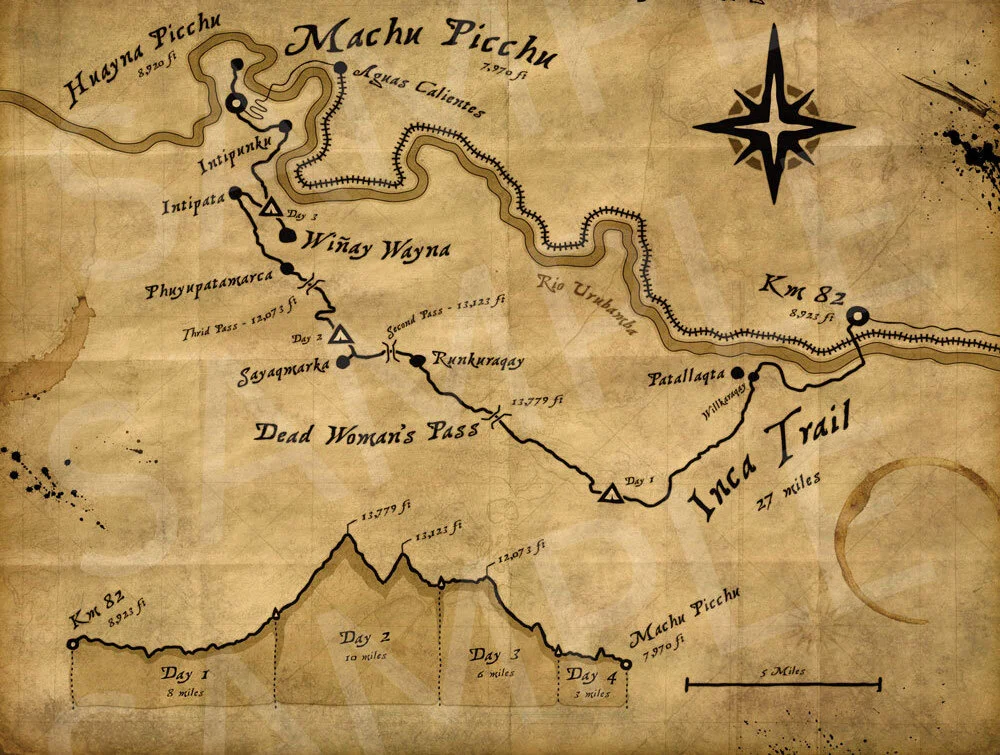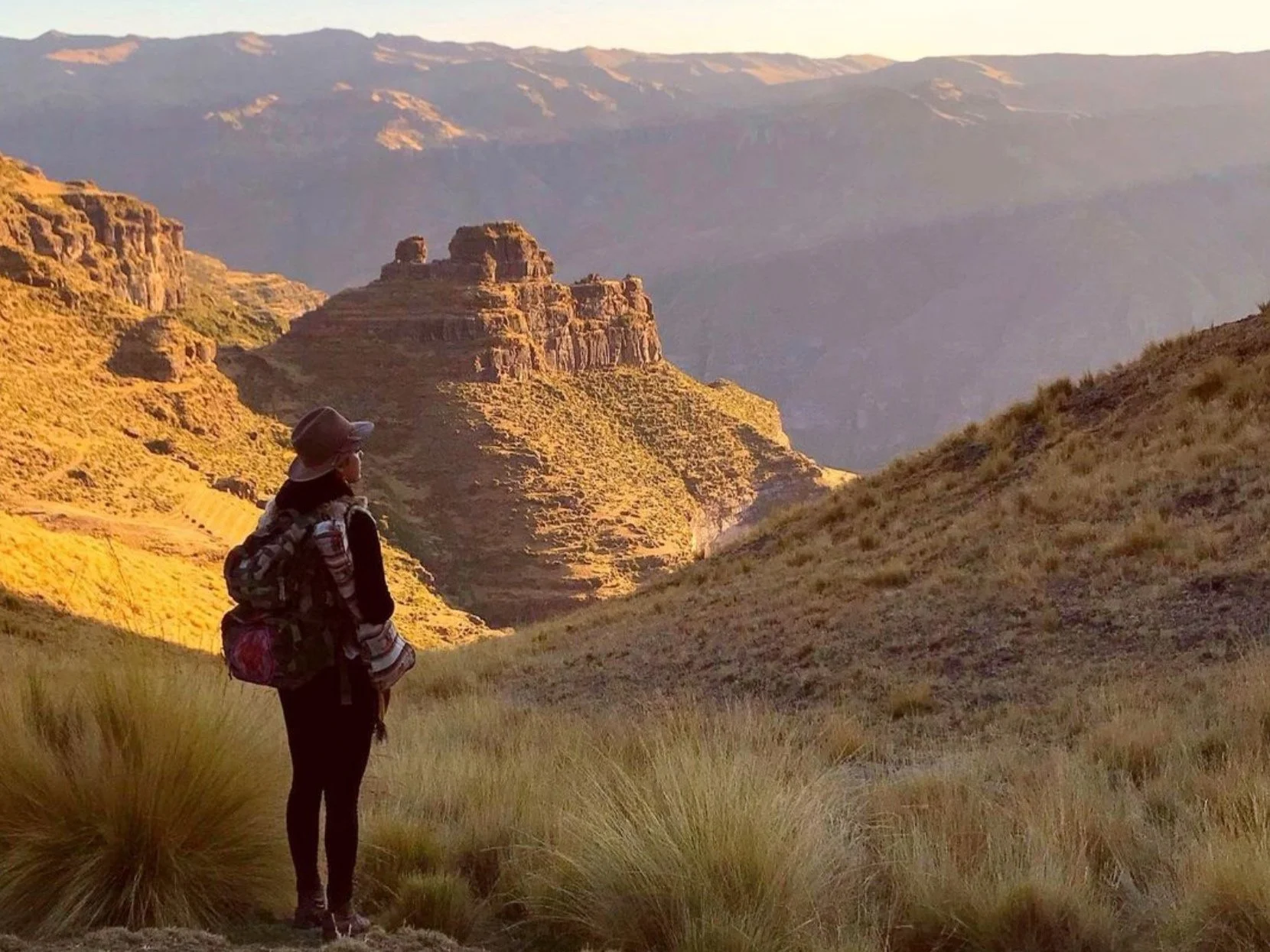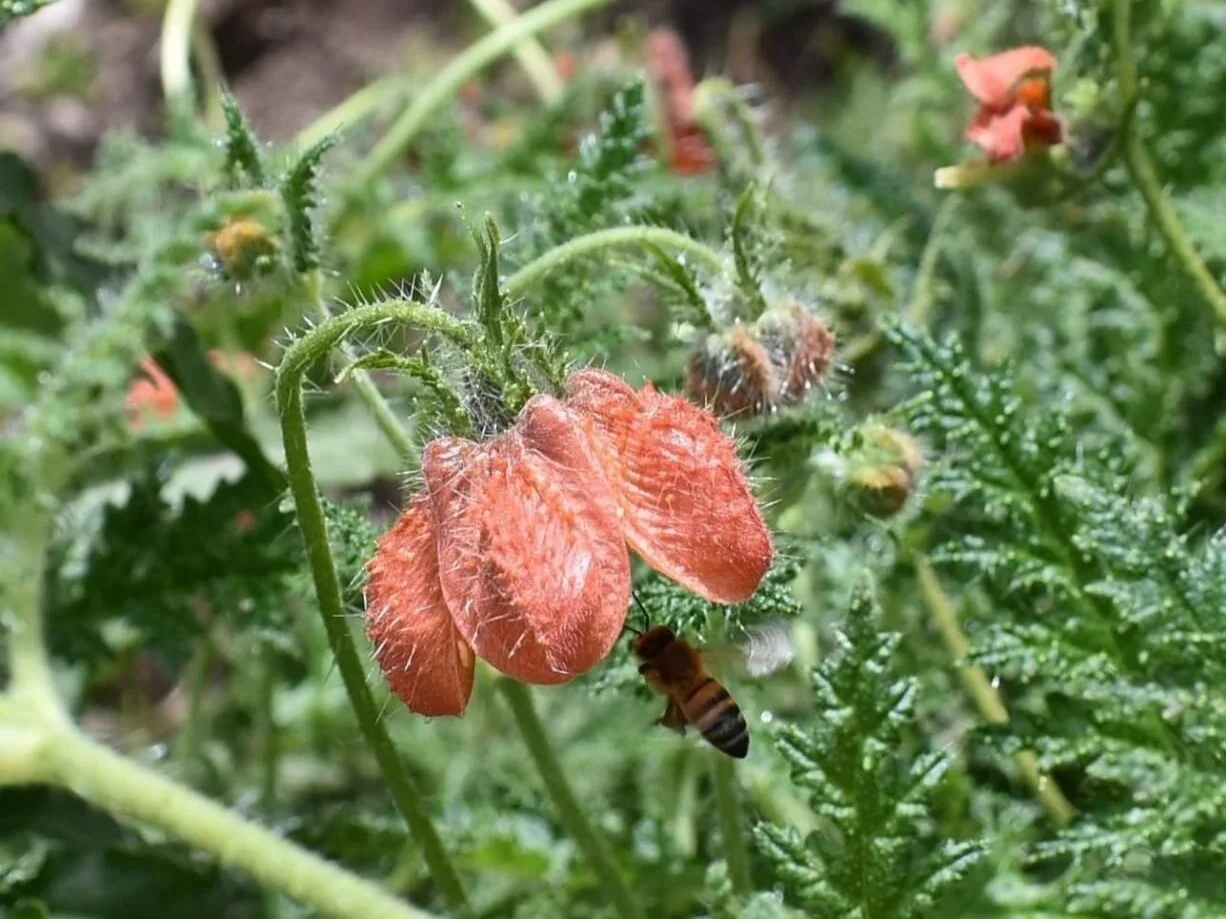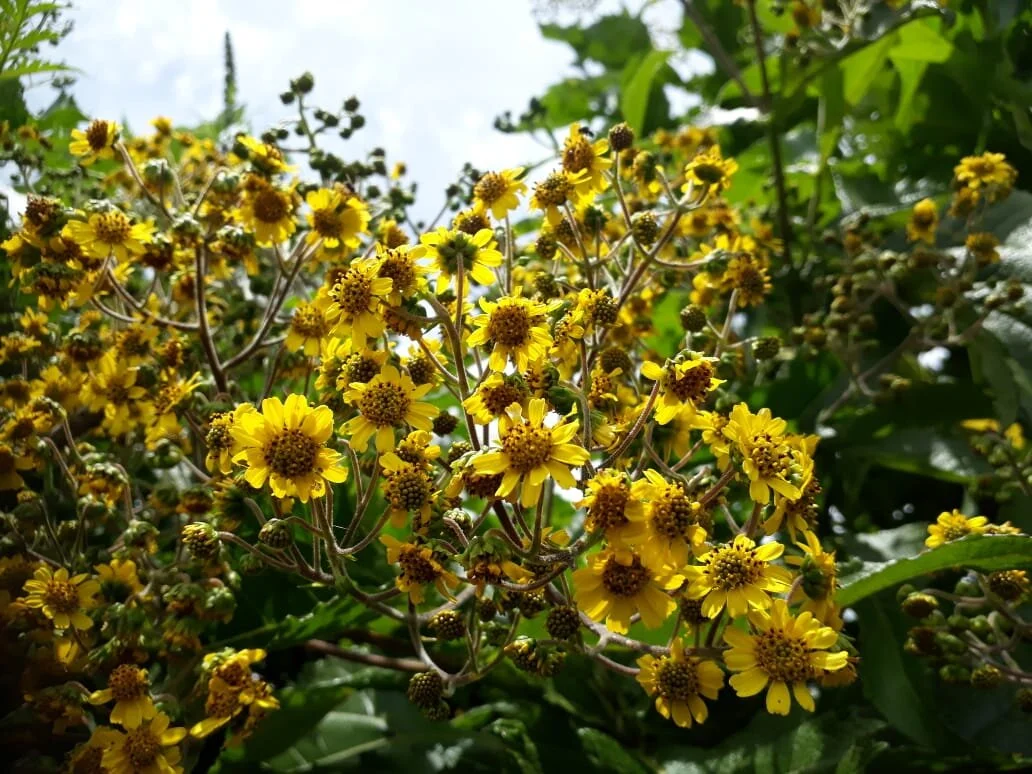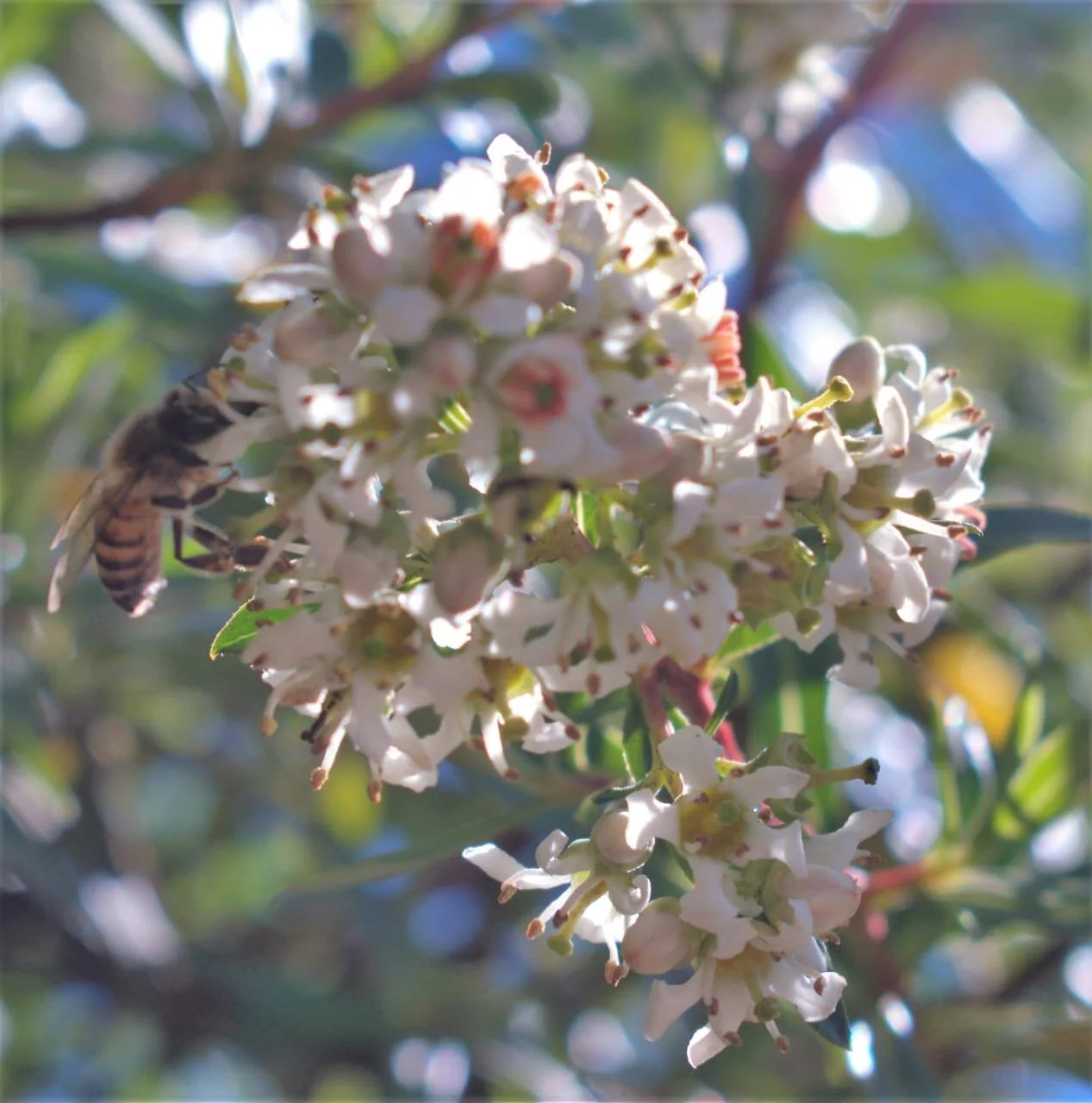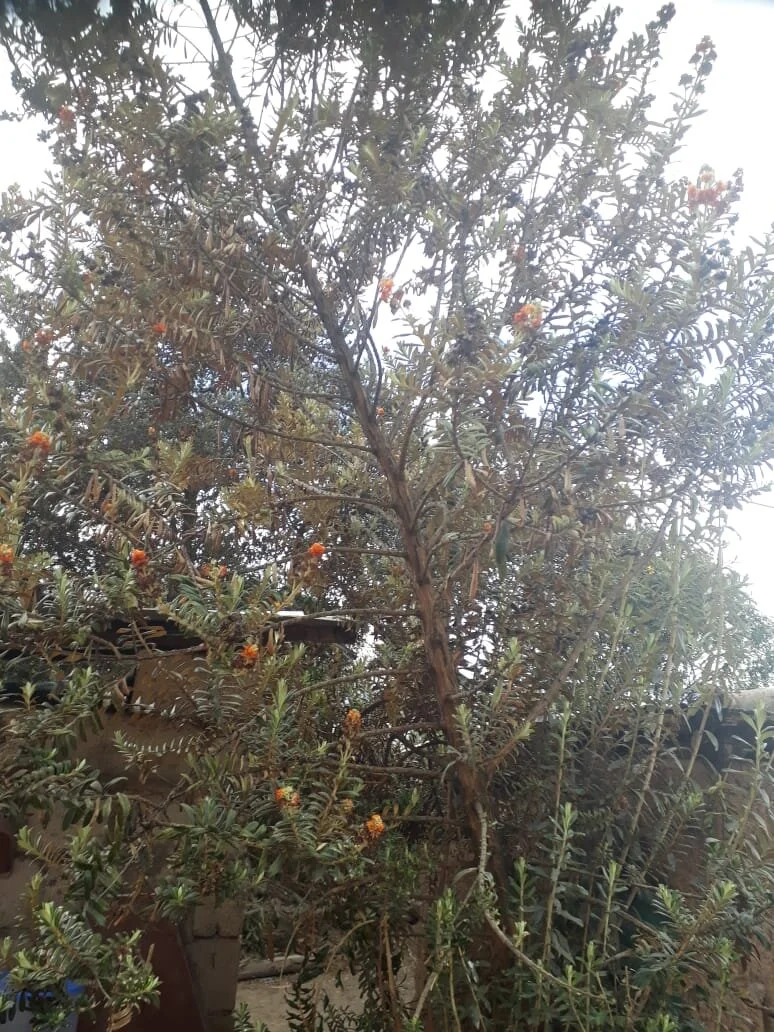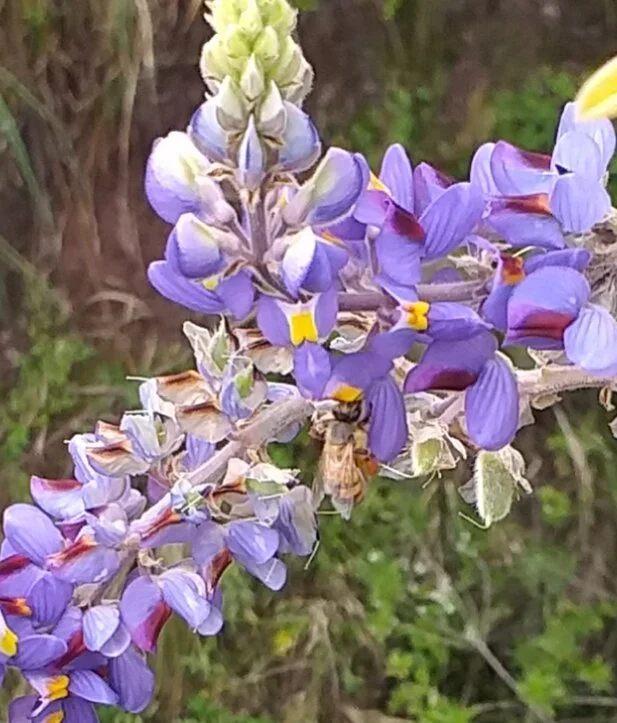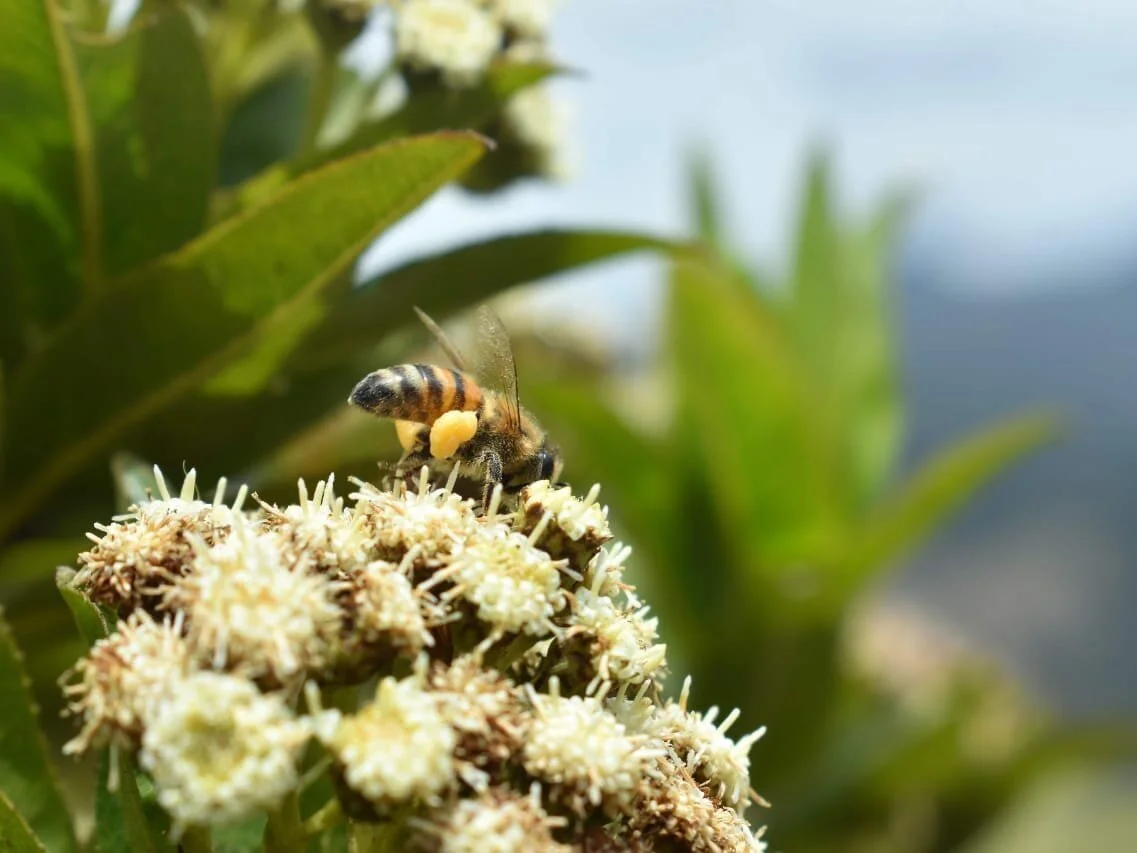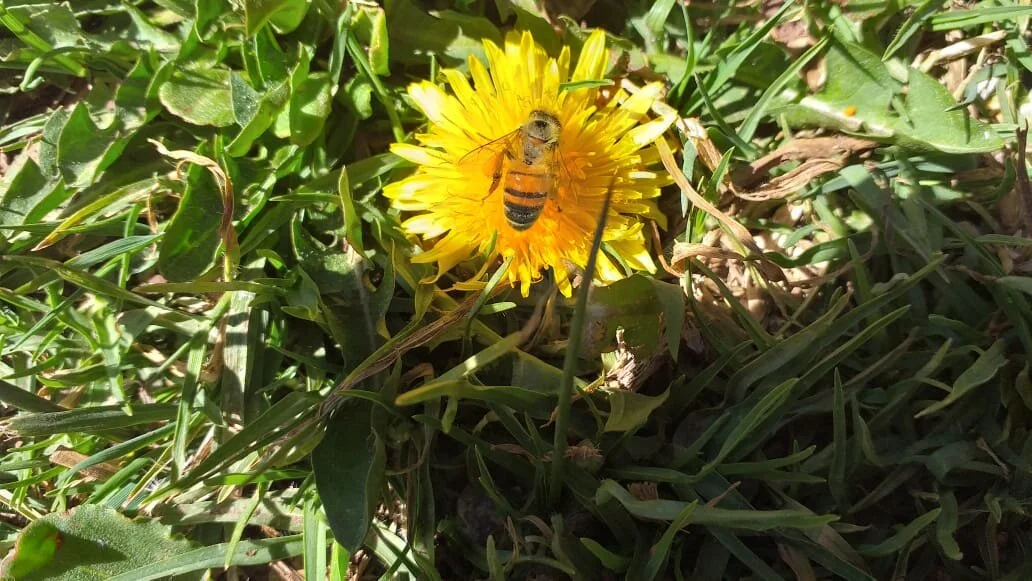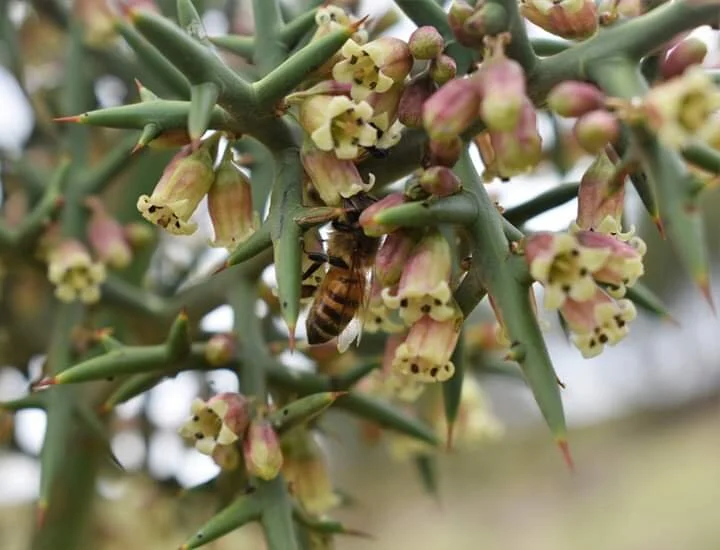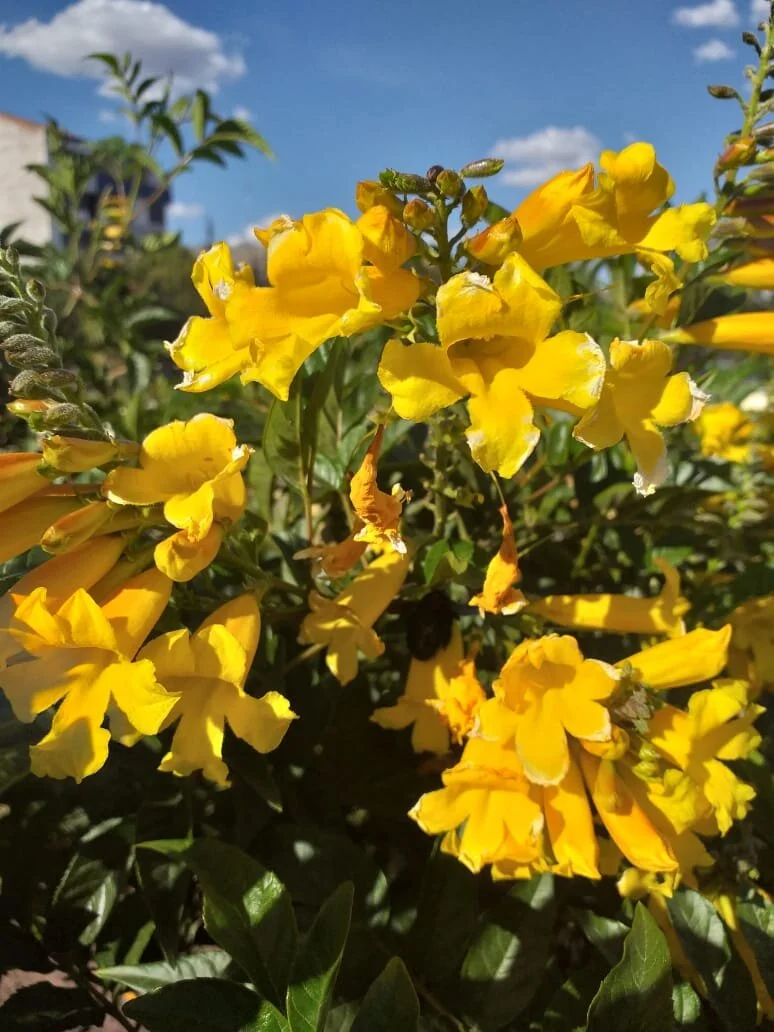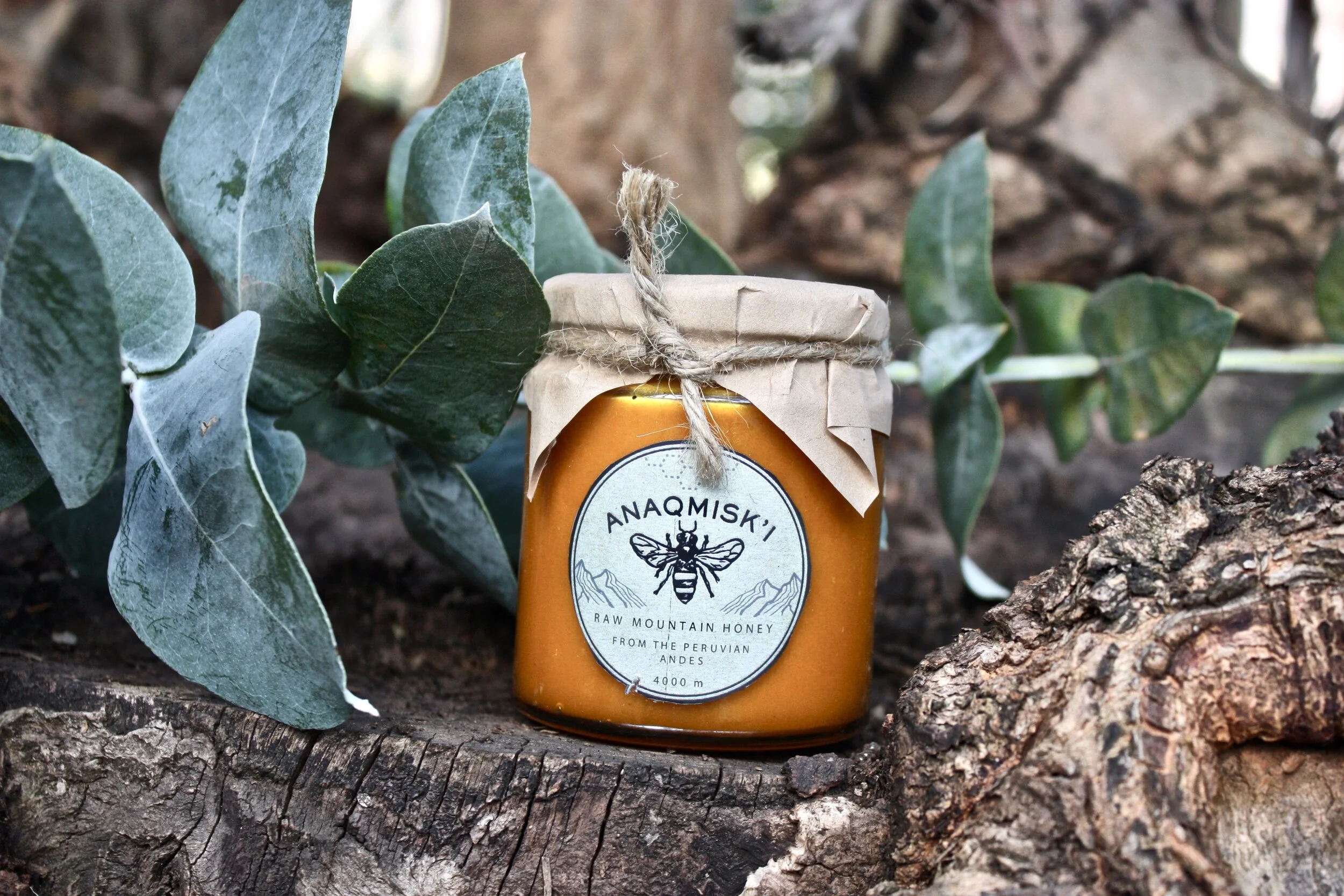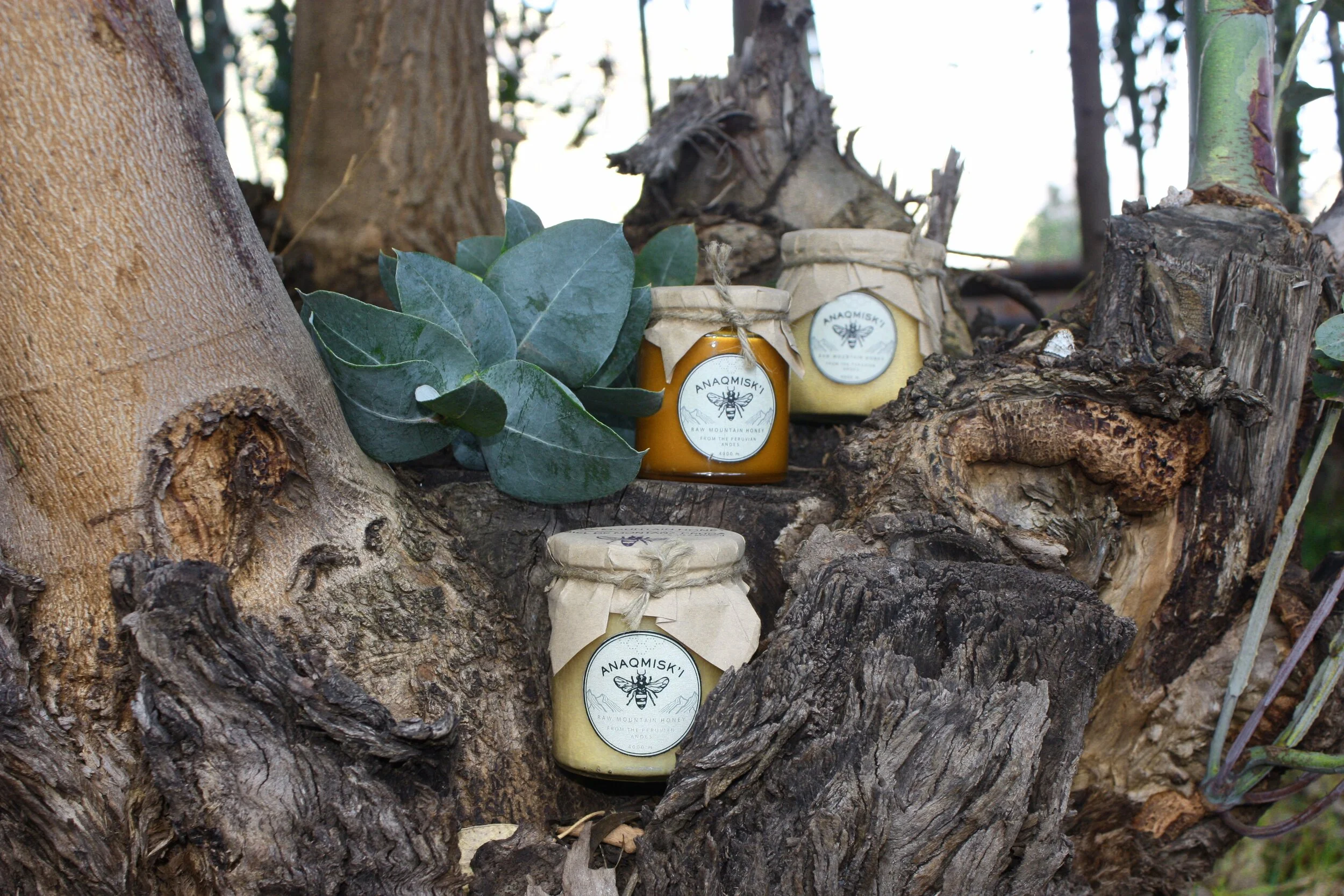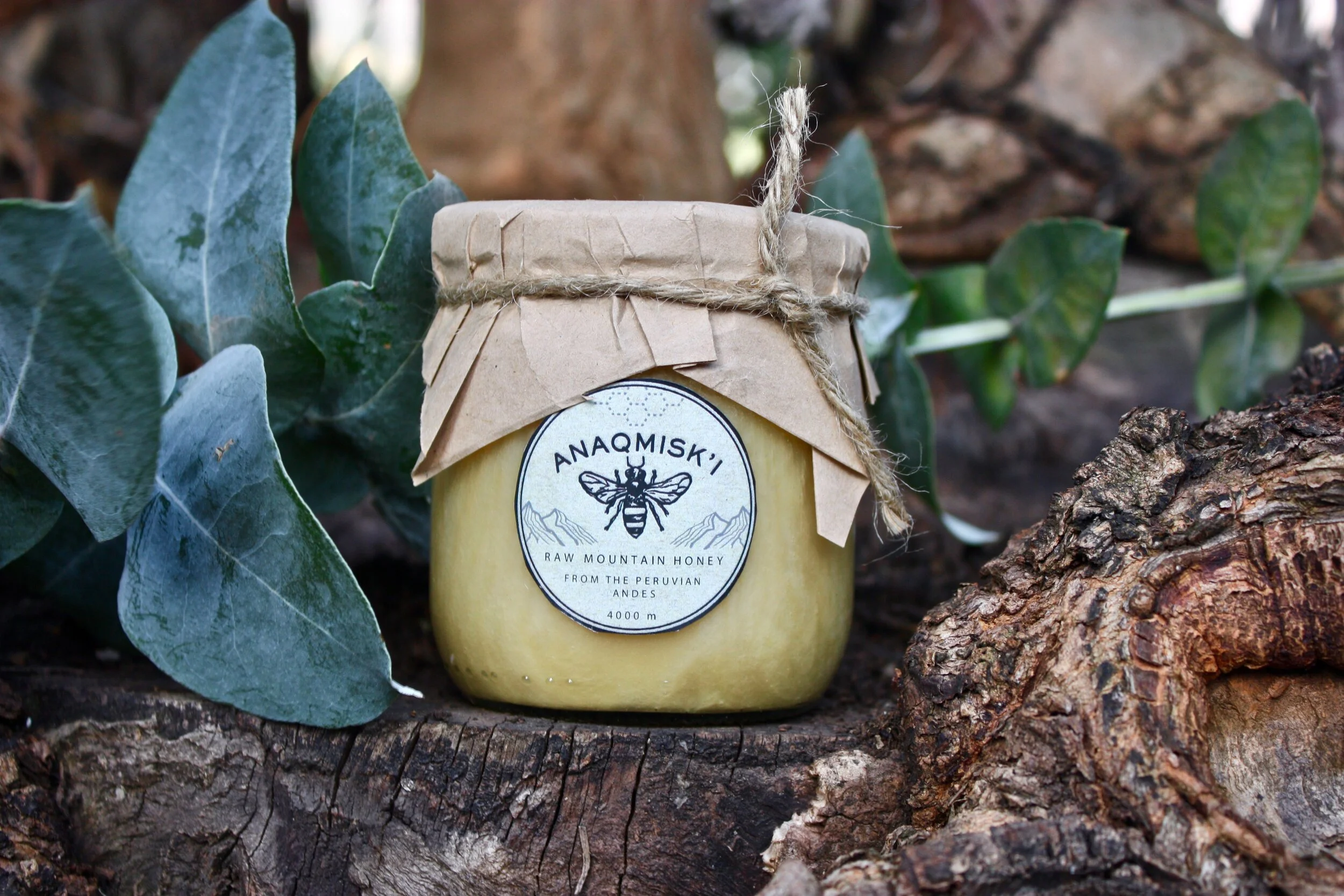THE ANDEAN BEES
The story of the land, it’s biotope, bees & Andean cosmovision
Anaqmisk’i Miel is about bringing forward the ancient medicine to the world: conscious beekeeping using ancient methods while producing organic raw honey originating from pesticide-free land and communities usually isolated in the Peruvian Andes.
Our honey comes from Acomayo, at 3600 meters altitude in the Cusco region. The native bees in this area pollinate from medicinal native plants: Chachakuma, Muña, Paqpa, and Q’ero.
With Yesenia & David | Oct 2018 in Anta, Cusco - Peru
Bee whisperer David | Nov 2019 in Waqrapukara, Acomayo
December 2022 | Chicón mountain, Urubamba - Peru
The golden chachacomo honey
With David and the partially blind beekeeper elder
Xavier, another passionate beekeeper
Waqrapukara
The land of honey
A bit of History..
The chachacomo honey comes from the south of Cusco, in the mountains of Acomayo near the magnificient ruins of Waqrapukara.
location
The soaring stone is exquisitely settled in a river valley surrounded by conspicuous cliffs. This hidden Inca gemis is still gaining fame as it was only just recognised as a natural heritage site in 2017. The archaeological center of Waqrapukara, belongs to the district of Acos of the province of Acomayo in the department of Cusco, and is located at an approximate height of 4140 meters above sea level.
Etymology
The denomination Waqrapukara comes from the Quechua people who inhabited these lands long before the arrival of the Incas. The word translates from “waqra” (horn) and “pukara” (fortress), so it is also commonly referred to as the “Horned Fortress.” The name itself a mystery, since there were no cattle or horned livestock until the Spanish conquistadors arrived.
However there seems to be another previous more colloquial denomination used by the locals: LlamaPukara, which would translate as the llama fortress, the two horns representing the two upright ears of a llama. Llamas were considered as sacred animals by the Incas, used for traveling long distances with heavy loads, they were not only used for their meat and wool, but for sacrificing rituals in ceremonies. There is also the name Llaqtapukara which would translate as "people's barracks", which perhaps alludes to the place, as a last resort, a refuge of the resistance that the Qanchis people opposed to the Inca empire. Archaeologist Miguel Cornejo indicates that the place represents truly, beyond the linguistic interpretation, as "the architecture of Power".
History
There is no clear indication as to the exact date of when the fortress was built, but it is said that it predates the Incas by a very long time. The Waqrapukara archaeological site appears to have undergone various stages of human occupation, being in all of them an important site of religious administrative origin. The first of the ethnic groups to occupy it was apparently the Qanchis, who, according to Luis Barreda Murillo, appeared approximately in the year 2500 BC, in the pre-ceramic period. During this historical time, the function of a shrine was to honor the god Teqsi Pachacamaq Wiraqocha, as mentioned in the chronicle of Human Poma de Ayala.
The Qanchis ethnic group was conquered by the Incas as part of the Inca expansion plan over the Aymara tribes, giving this place an administrative use due to its strategic location, and in turn continuing its religious practice, as was the regular custom in the conquered peoples.
Already during the Inca period there is a chronicle of one of the many uprisings that the Inca state had to put down in many of the already conquered territories, in which it narrates the uprising of the Qanchi people against Wayna Qhapaq due to the increase in the payment of tributes, which were collected in looms or fabrics. The leader of this rebellion named Ttito Qosñipa was defeated after a long resistance of several months taking refuge in Waqrapukara, possibly built in this period the two characteristic towers that he used as strategic surveillance posts. There is a similar story (which is also a chronicle) that has remained in the memory of the population, mentioning the benevolence of the Inca towards the rebel leader of the Qanchis. A ñusta or princess of the Inca royalty was given to the the political leader, the caudillo, which was later on incorporated to the Inca army that marched, in that period, to the conquest of the current equator and to the place of resistance (Waqrapukara). Waqrapukara was from then on was established as an astronomical obervatory as well as an official Inca sanctuary of worship to the creator god sun Illa Teqci Pacha Kamaq Wiraqoch.
The Climate
The climate of the place corresponds to that of the entire Cusco region with the two respective seasons that between May and October are in the cold-dry period and between the months of November and April in the rainy season, on the other hand, the winds can be constant and increase between the months of August and September due to the geography of the place.
Finally, temperatures can have a maximum of 19 degrees Celsius and a minimum of -6 degrees on the coldest and harshest nights.
Distance: 14.69 miles (23.6 km) | minimum altitude 11,155 ft (3400 meters) | peak 14,984 ft (4567 meters) Climb 4,396 ft (1339 meters) | descend 5,548 ft (1691 meters) | Time of our usual trek to the bees & ruins 2 days (!)
POLLINATION OF NATIVE MEDICINAL MOUNTAIN PLANTS
P U K A
P I B I L
OUR STAR..
CH A CH A KU MA
Q U I S W AR
Q E R A
C H I L C A
TO Q A C HO
PI LLI - PI LLI
R O C K E
CHI WAN HAY
Incredible plants producing unique specialty honeys
From pale yellow creamy to molasse texture dark orange..
Andean Cosmovision
The Andean and Amazonian worldview or vision of the cosmos by the human being, is rooted in respect for all expressions of nature, cultivated in millennia of culture, with many civilizations that coexisted and transmitted their knowledge.
It is believed that it extended from Chile in the south to Colombia in the north and also included present-day countries such as Peru, Bolivia, Argentina and Ecuador. It has a particular relationship with Peru for being the center of complex societies throughout its history.
There is evidence that more than 5000 years ago, there were many peoples and finally the Quechuas who transmitted the Andean worldview to us as a means to understand and live consciously in this world with total and sincere respect for Nature that is alive and works thanks to a greater consciousness that every human being can access. This way of living was perpetuated throughout the centuries, and survived the evangelization that began in the 16th century at the height of the Inca times, and has remained subtle and silent, up to this time in which we live.
The Andean Cosmovision are the codes of ethics and behavior that embrace life and allow the universal interrelation that connects all living beings.
In this sense, we are all integral and reciprocal expressions of the same vital, unified, recurring energy that animates and makes our world dynamic. In Quechua they call it “Kawsay”. It is the holistic vision of life and the deep awareness of Nature and its balance.
The biocentric approach of the Andean peoples is manifested in the practice that man and nature are not separated. The human being is not external to Nature since he is part of it, is born in it, is nourished in it and returns to it when it completes its cycle. The Andean Cosmovision defends the vision of the sacred connection that relates the human being with all the worlds, sacred and profane.
The worldview is a way of observing the Universe to get to know ourselves better, the perception of reality from our own authentic experience, to understand the fabric of life, the origin, structure and space-time relationships of the universe, and many interpretations are manifested in the sacred stories in the myths that link the genesis of the universe with human existence. All woven into the perception and coherent behavior of a person and their culture evidenced in all facets of life: customs, manners, morals, philosophy, politics, religion.
The Universe is alive and everything in it is intertwined.
So how do you apply it in your daily life? It is a way of being and not necessarily of thinking. It is not a concept of the mind but the recognition of an energetic force that animates all living beings and interrelates us in a single consciousness.
The Andean worldview is the notion that everything comes from a source of energy, of light: Illa Teqsi “the eternal Light”, that same omnipresent prosperous energy from which the Universe was born. It is the vital force or Prana that animates our entire ecosystem and forms of life, from the human kingdom to the animals; from the mountains, the oceans, the rivers, the trees, the plants and the rocks to the stars, and that connects us as a whole to our Earth, the living planet, the Pachamama.
What is Pachamama? Contrary to the common belief that defines her as a goddess or an idol, the Pachamama is a relationship. This Quechua word is anchored in two words pacha: which means earth and mama: mother. It is intelligence, the living reality that each one carries within himself, in his own human nature and understanding that, in the Law of Nature, there is the constancy of exchange and reciprocity, called Ayni in Quechua.
The Andean worldview is therefore a relationship with ourselves. By being aware of our inner Being and our own mechanisms that make up our human body, then we can listen to the Universe as a whole and understand its Laws.
Mentor Yesenia and I in awe and joy in front of the bees.. Want to see more photos? click here

